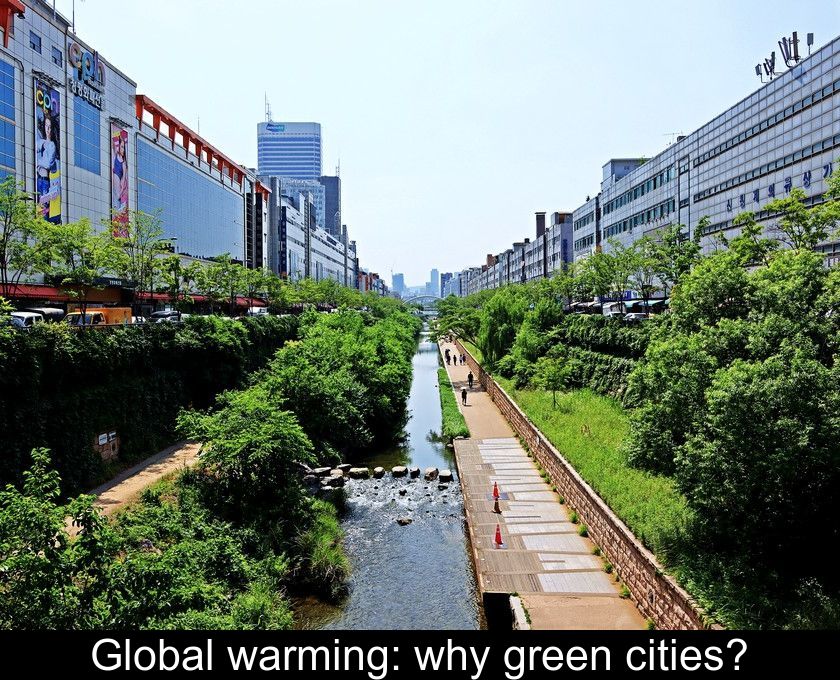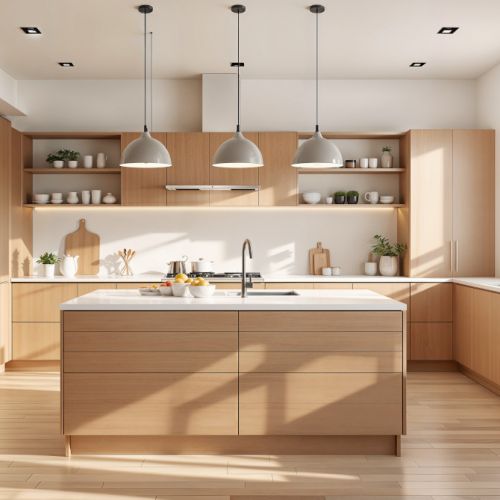Global Warming: Why Green Cities?
You have no doubt already heard that cities need to be greened to cool them down and combat the harmful effects of climate change. But is this strategy really effective? And how can it be implemented in urban spaces or at home? We will explain why and how to green the city.
Why green cities?
Over the past decades, urban sprawl has led to a soil artificialization. Concrete and asphalt have invaded our environment, and green areas have shrunk drastically. Today, climate change is prompting municipalities to reverse course and green the cities, meaning replanting vegetation in the heart of the city to combat urban heat islands.
Urban heat islands or UHIs refer to areas where surfaces like tarmac, facades, and roofs retain heat, even after sunset. To make matters worse, in urban areas, human activities and pollution cause temperatures to rise. Even after nightfall, temperatures struggle to drop, especially during heatwaves...
While artificial surfaces store heat, plants prevent this phenomenon and cool the air. Thus, in summer, a temperature difference of up to 7°C or even 8°C between the city of Paris and the surrounding countryside has been observed.
How does vegetation cool its environment?
The ability of plants to provide coolness is no longer in question. This has been demonstrated by satellite images, which show that parks and tree-lined roads have cooler surface temperatures.
Greening cities is one of the most effective strategies to combat the phenomenon of urban heat islands for several reasons:
• Trees create shade and prevent the sun's UV rays from reaching the ground, thus stopping the ground from storing heat.
• Green facades and roofs have the same protective effect. These vegetation-covered surfaces prevent the reflection of the sun's rays from one facade to another or from the ground to the facades.
• Plants absorb some of the solar energy for photosynthesis but do not store it and do not release it later during the night.
• All plants release water vapor through their foliage. This phenomenon called evapotranspiration allows the plant to cool itself while also cooling the surrounding air.
On average, a mature tree can draw more than 450 liters of water from the soil and release 98% of it into the air as water vapor. One condition must be met for this "natural air conditioning" to work: plants must have water available at the root level. Therefore, they need to be watered or species that draw water from deep in the ground, like trees, should be chosen.
How to green the cities?
We have scientific evidence that greening cities can lower the perceived temperature, especially in summer. As episodes of extreme heat or even heatwaves are likely to multiply due to climate change, it is urgent to address the lack of vegetation in cities. Climatologists estimate that heatwaves could become twice as frequent in France by 2050. To cope with this, any form of greening is beneficial, whether on an individual or collective scale.
Municipalities are beginning to rethink urban spaces to make them less mineral, less impermeable, and above all, greener. From now on, urban vegetation can no longer be limited to a few large parks or green spaces but must instead be present on every street corner so that all citizens can benefit from its cooling effect.
On a city scale, the best strategy is to plant trees along streets to create shade and gain a few precious degrees compared to streets without trees. To do this, it is important to prioritize local tree species that are water-efficient and capable of providing shade with abundant foliage. For greater efficiency, it is also important to prioritize fast-growing and long-living trees to provide lasting cooling to urban areas over time.
On a housing scale, it is also possible to green the surroundings of your house or apartment to mitigate summer heat. Individually, you can:
• replace a gravel courtyard with a flower meadow or a treed lawn, choosing an alternative to grass with more water-efficient ground cover species.
• green the facade of your house by covering it with climbing plants.
• protect your windows from sunlight and glare by creating a dense green screen on your terrace or balcony.








